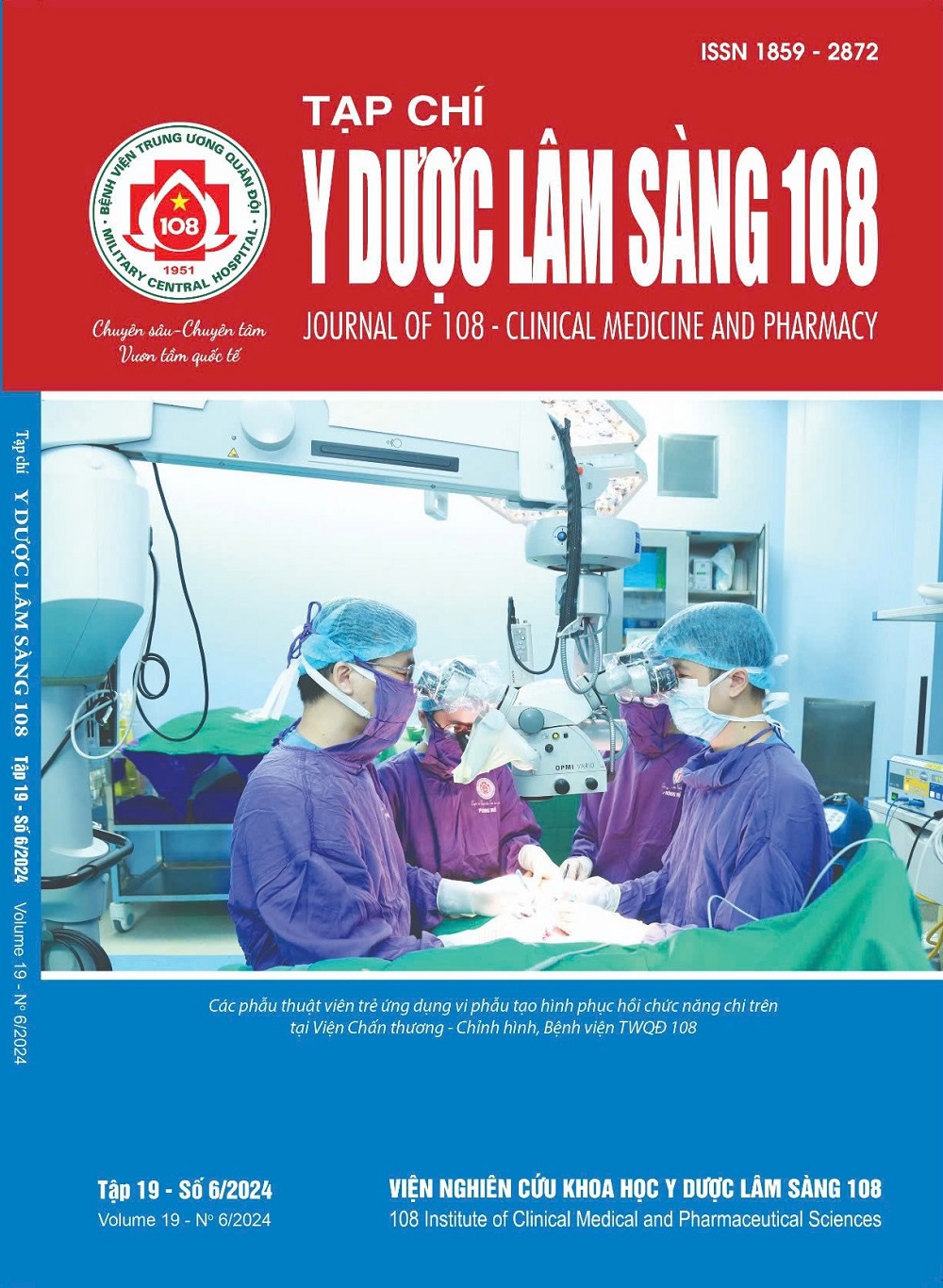Hội chứng QT dài típ 2: Nhân một trường hợp rung thất được cứu sống và tổng quan y văn
Main Article Content
Keywords
Tóm tắt
Hội chứng QT dài (Long QT Syndrome - LQTS) bẩm sinh là nhóm nguyên nhân quan trọng gây ngất do rối loạn nhịp tim. Chúng tôi báo cáo trường hợp nữ 33 tuổi tiền sử được chẩn đoán ngất do nhịp nhanh thất vào viện vì ngất, ghi nhận khoảng QT hiệu chỉnh trên điện tâm đồ 567,9ms, xét nghiệm gen phát hiện một biến thể dị hợp ở gen KCNH2 tại nhiễm sắc thể số 7 vị trí 150947377 với biến thể NM_000238.4:c.3103del (NP_000229.1:p.Arg1035GlyfsTer22). Bệnh nhân được chẩn đoán hội chứng QT dài típ 2 và xếp vào nhóm nguy cơ cao. Bệnh nhân ban đầu vẫn được điều trị với propranolol nhưng vẫn còn xuất hiện xoắn đỉnh liên tục, và sau đó bệnh nhân được chỉ định đặt máy phá rung (ICD) để dự phòng đột tử. Xét nghiệm gen trong các trường hợp hội chứng QT dài là cần thiết để chẩn đoán xác định rõ ràng và phân tầng nguy cơ. Chỉ định đặt máy phá rung ICD cần được xem xét trong các trường hợp bệnh nhân ngất do rối loạn nhịp thất để dự phòng đột tử trong nhóm bệnh này.
Article Details
Các tài liệu tham khảo
2. Zeppenfeld K, Tfelt-Hansen J, de Riva M et al (2022) 2022 ESC Guidelines for the management of patients with ventricular arrhythmias and the prevention of sudden cardiac death. European heart journal 43(40): 3997-4126. doi:10.1093/eurheartj/ehac262.
3. Schwartz PJ, Ackerman MJ, Antzelevitch C et al (2020) Inherited cardiac arrhythmias. Nature reviews Disease primers 6(1): 58. doi:10.1038/s41572-020-0188-7.
4. Han L, Liu F, Li Q, et al (2020) The efficacy of beta-blockers in patients with long QT syndrome 1-3 according to individuals' gender, age, and QTc intervals: A network meta-analysis. Frontiers in pharmacology 11: 579525. doi:10.3389/fphar.2020.579525.
5. Chockalingam P, Crotti L, Girardengo G et al (2012) Not all beta-blockers are equal in the management of long QT syndrome types 1 and 2: higher recurrence of events under metoprolol. Journal of the American College of Cardiology 60(20): 2092-2099. doi:10.1016/j.jacc.2012.07.046.
6. Priori SG, Wilde AA, Horie M et al (2013) HRS/EHRA/APHRS expert consensus statement on the diagnosis and management of patients with inherited primary arrhythmia syndromes: document endorsed by HRS, EHRA, and APHRS in May 2013 and by ACCF, AHA, PACES, and AEPC in June 2013. Heart rhythm 10(12): 1932-1963. doi:10.1016/j.hrthm.2013.05.014.
7. Schwartz PJ, Spazzolini C, Priori SG et al (2010)Who are the long-QT syndrome patients who receive an implantable cardioverter-defibrillator and what happens to them?: data from the European long-QT syndrome implantable cardioverter-defibrillator (LQTS ICD) registry. Circulation 122(13): 1272-1282. doi:10.1161/circulationaha.110.950147.
8. Wang M, Peterson DR, Rosero S et al (2021) Effectiveness of implantable cardioverter-defibrillators to reduce mortality in patients with long QT syndrome. Journal of the American College of Cardiology 78(21): 2076-2088. doi:10.1016/j.jacc.2021.09.017.
9. Younis A, Aktas MK, Rosero S et al (2020) Outcome by Sex in Patients With Long QT Syndrome With an Implantable Cardioverter Defibrillator. Journal of the American Heart Association 9(19):016398. doi:10.1161/jaha.120.016398.
10. De Cario R, Kura A, Suraci S et al (2020) Sanger validation of high-throughput sequencing in genetic diagnosis: Still the best practice? Frontiers in genetics 11:592588. doi:10.3389/fgene.2020.592588.
11. Wilde AA, Jongbloed RJ, Doevendans PA et al (1999) Auditory stimuli as a trigger for arrhythmic events differentiate HERG-related (LQTS2) patients from KVLQT1-related patients (LQTS1). Journal of the American College of Cardiology 33(2): 327-332. doi:10.1016/s0735-1097(98)00578-6.
 ISSN: 1859 - 2872
ISSN: 1859 - 2872
